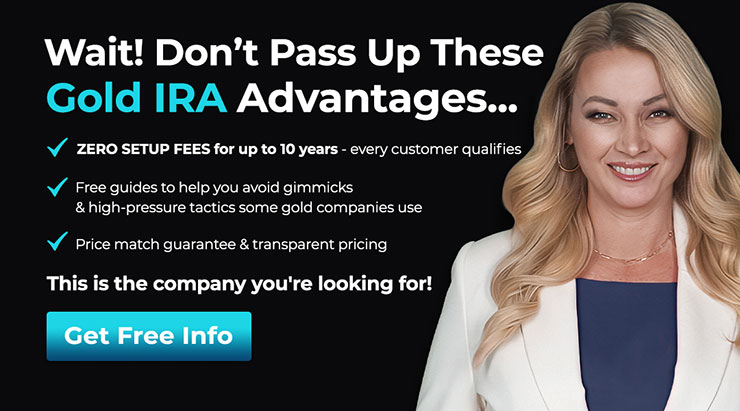Hey there, curious minds! Ever wondered how a Strategic Bitcoin Reserve (SBR) works its magic? Let's dive into the world of strategic financial reserves, where Bitcoin plays the lead role in securing stability, warding off inflation, and empowering economic independence.
Delving Deeper into Strategic Bitcoin Reserves
Embracing Financial Stability
Picture this: a Strategic Bitcoin Reserve acts as a shield against economic storms, shielding nations and institutions from the erosion caused by inflation tied to traditional currencies. By integrating Bitcoin's unique features—like its capped supply and resistance to censorship—these reserves pave the way for a robust financial future.
The Heart of the Matter
Here's the scoop: holding Bitcoin as part of a reserve isn't just a trend; it's a strategic move. Governments and corporations worldwide are hopping on board, recognizing Bitcoin's 21 million coin limit as a beacon of deflationary hope amidst volatile financial landscapes.
The Power Play
Strength in Diversity
Building a Strategic Bitcoin Reserve isn't just about safeguarding against inflation. It's a bold step towards financial sovereignty, reducing reliance on centralized banking systems. By embracing Bitcoin, these reserves signal a shift towards modernized, decentralized financial strategies.
Trailblazing Examples
El Salvador
Meet El Salvador—the pioneer. By adopting Bitcoin as legal tender and stocking up on BTC, this nation set the stage for strategic Bitcoin adoption, inspiring future reserve strategies worldwide.
United States
Fast forward to 2025, and the U.S. formalized its Bitcoin holdings into a Strategic Reserve, marking a pivotal move towards financial innovation and modernization.
Strategy (formerly MicroStrategy)
Strategy stole the show, accumulating over 500,000 BTC by 2025 through innovative financial tactics, solidifying its stance as a corporate Bitcoin trailblazer.
Metaplanet Inc.
From Japan, with love for Bitcoin. Metaplanet Inc. embraced Bitcoin as its primary treasury asset, showcasing the rising trend of corporations turning to Bitcoin for long-term financial security.
Decoding the Mechanism
1. Procuring and Allocating
Setting up a Strategic Bitcoin Reserve involves a strategic allocation of funds to Bitcoin. Think of it as a financial chess move—strategic, calculated, and aimed at long-term stability.
2. Funding the Future
- Confiscated Bitcoin: Uncovering hidden treasure from asset seizures to boost reserves.
- Gold Certificates: A golden opportunity to leverage physical gold assets for financial strength.
- Fed Surplus: Tapping into surplus Federal Reserve funds without stirring the economic pot.
3. Legal Framework and Oversight
- Setting purchase limits.
- Defining conditions for Bitcoin sales.
- Ensuring transparency and accountability through reporting and audits.
4. Safekeeping Strategies
Securing Bitcoin reserves requires a robust, decentralized approach, safeguarding against risks and ensuring accountability through multisignature custody models.
5. Long-Term Vision
Strategic reserves mean business. With a 20-year minimum hold mandate, these reserves stand strong against short-term market fluctuations, ensuring stability and consistency.
6. Strategic Integration
- Collateral for borrowing.
- Risk diversification alongside traditional reserves.
- Leveraging diplomatic and economic negotiations for strategic gains.
Why Bitcoin is the Rising Star
Bitcoin isn't just a digital coin; it's a beacon of financial hope. With a fixed supply, decentralized structure, and transparency, Bitcoin emerges as a frontrunner in the world of strategic reserves, offering stability in uncertain times.
So, are you ready to unlock the power of Strategic Bitcoin Reserves and embrace a future of financial resilience and innovation? The world of strategic reserves awaits—dive in and secure your financial future today!
Frequently Asked Questions
How much money should I put into my Roth IRA?
Roth IRAs are retirement accounts where you deposit your own money tax-free. The account cannot be withdrawn from until you are 59 1/2. However, if you do decide to take out some of your contributions before then, there are specific rules you must follow. First, your principal (the original deposit amount) cannot be touched. This means that regardless of how much you contribute to an account, you cannot take out any more than you initially contributed. If you decide to withdraw more money than what you contributed initially, you will need to pay taxes.
The second rule says that you cannot withdraw your earnings without paying income tax. You will pay income taxes when you withdraw your earnings. Consider, for instance, that you contribute $5,000 per year to your Roth IRA. Let's say you earn $10,000 each year after contributing. On the earnings, you would be responsible for $3,500 federal income taxes. That leaves you with only $6,500 left. Because you can only withdraw what you have initially contributed, this is all you can take out.
So, if you were to take out $4,000 of your earnings, you'd still owe taxes on the remaining $1,500. On top of that, you'd lose half of the earnings you had taken out because they would be taxed again at 50% (half of 40%). So even though you received $7,000 in Roth IRA contributions, you only received $4,000.
There are two types of Roth IRAs: Traditional and Roth. A traditional IRA allows for you to deduct pretax contributions of your taxable income. Your traditional IRA allows you to withdraw your entire contribution plus any interest. There are no restrictions on the amount you can withdraw from a Traditional IRA.
A Roth IRA doesn't allow you to deduct your contributions. Once you are retired, however, you may withdraw all of your contributions plus accrued interest. There is no minimum withdrawal required, unlike a traditional IRA. Your contribution can be withdrawn at any age, not just when you reach 70 1/2.
Should You Invest in Gold for Retirement?
How much money you have saved, and whether or not gold was an option when you first started saving will determine the answer. If you are unsure which option to choose, consider investing in both options.
Gold offers potential returns and is therefore a safe investment. This makes it a worthwhile choice for retirees.
While most investments offer fixed rates of return, gold tends to fluctuate. Its value fluctuates over time.
This doesn't mean that you should not invest in gold. Instead, it just means you should factor the fluctuations into your overall portfolio.
Another advantage of gold is its tangible nature. Gold can be stored more easily than stocks and bonds. It's also portable.
As long as you keep your gold in a secure location, you can always access it. There are no storage charges for holding physical gold.
Investing in gold can help protect against inflation. Gold prices are likely to rise with other commodities so it is a good way of protecting against rising costs.
A portion of your savings can be invested in something that doesn't go down in value. Gold usually rises when stocks fall.
Another benefit to investing in gold? You can always sell it. You can also liquidate your gold position at any time you need cash, just like stocks. You don’t even need to wait until retirement to liquidate your position.
If you do decide to invest in gold, make sure to diversify your holdings. Don't put all of your eggs in one basket.
Don't buy too many at once. Start small, buying only a few ounces. You can add more as you need.
Keep in mind that the goal is not to quickly become wealthy. It is to create enough wealth that you no longer have to depend on Social Security.
And while gold might not be the best investment for everyone, it could be a great supplement to any retirement plan.
How much gold should you have in your portfolio?
The amount you make will depend on the amount of capital you have. Start small with $5k-10k. Then as you grow, you could move into an office space and rent out desks, etc. Renting out desks and other equipment is a great way to save money on rent. You just pay per month.
Consider what type of business your company will be running. In my case, we charge clients between $1000-2000/month, depending on what they order. So if you do this kind of thing, you need to consider how much income you expect from each client.
As freelance work requires you to be paid freelancers, your monthly salary won't be as high as mine. So you might only get paid once every 6 months or so.
Before you can determine how much gold you'll need, you must decide what type of income you want.
I recommend starting with $1k-$2k in gold and working my way up.
What Should Your IRA Include in Precious Metals?
The most important thing you should know when investing in precious metals is that they are not just for wealthy people. You don’t need to have a lot of money to invest. There are many ways that you can make money with gold and silver investments, even if you don't have much money.
You could also consider buying physical coins like bullion bars, rounds or bullion bars. It is possible to also purchase shares in companies that make precious metals. Another option is to make use of the IRA rollover programs offered by your retirement plan provider.
Regardless of your choice, you'll still benefit from owning precious metals. Even though they aren't stocks, they still offer the possibility of long-term growth.
They also tend to appreciate over time, unlike traditional investments. This means that if you decide on selling your investment later, you'll likely get more profit than you would with traditional investing.
What is the benefit of a gold IRA?
The benefits of a gold IRA are many. It's an investment vehicle that allows you to diversify your portfolio. You decide how much money you want to put into each account, and when you want it to be withdrawn.
Another option is to rollover funds from another retirement account into a IRA with gold. If you are planning to retire early, this makes it easy to transition.
The best part about gold IRAs? You don't have to be an expert. They're available at most banks and brokerage firms. You don't have to worry about penalties or fees when withdrawing money.
That said, there are drawbacks too. Gold has historically been volatile. So it's essential to understand why you're investing in gold. Are you looking for growth or safety? Is it for insurance purposes or a long-term strategy? Only after you have this information will you make an informed decision.
If you plan to keep your gold IRA indefinitely, you'll probably want to consider buying more than one ounce of gold. You won't need to buy more than one ounce of gold to cover all your needs. Depending on your plans for using your gold, you may need multiple ounces.
You don't need to have a lot of gold if you are selling it. Even one ounce is enough. But, those funds will not allow you to buy anything.
Statistics
- Indeed, several financial advisers interviewed for this article suggest you invest 5 to 15 percent of your portfolio in gold, just in case. (aarp.org)
- Contribution limits$6,000 (49 and under) $7,000 (50 and up)$6,000 (49 and under) $7,000 (50 and up)$58,000 or 25% of your annual compensation (whichever is smaller) (lendedu.com)
- Instead, the economy improved, stocks rebounded, and gold plunged, losing 28 percent of its value in 2013. (aarp.org)
- If you take distributions before hitting 59.5, you'll owe a 10% penalty on the amount withdrawn. (lendedu.com)
- This is a 15% margin that has shown no stable direction of growth but fluctuates seemingly at random. (smartasset.com)
External Links
investopedia.com
- Are You a Good Candidate for a Gold IRA
- What are the Options Types, Spreads. Example. And Risk Metrics
cftc.gov
bbb.org
law.cornell.edu
- 7 U.S. Code SS7 – Designation boards of trade as contract market authorities
- 26 U.S. Code SS 408 – Individual retirement accounts
How To
3 Ways To Invest in Gold For Retirement
It's crucial to understand where gold fits in your retirement strategy. There are many ways to invest in gold if you have a 401k account at work. It is also possible to invest in gold from outside of your work environment. For example, if you own an IRA (Individual Retirement Account), you could open a custodial account at a brokerage firm such as Fidelity Investments. If precious metals aren't your thing, you may be interested in buying them from a dealer.
These are three easy rules to remember if you invest in gold.
- Buy Gold with Your Cash – Don't use credit cards or borrow money to fund your investments. Instead, cash in your accounts. This will help protect you against inflation and keep your purchasing power high.
- Physical Gold Coins: You should own physical gold coins, not just a certificate. Physical gold coins can be sold much faster than paper certificates. Physical gold coins are also free from storage fees.
- Diversify Your Portfolio – Never put all of your eggs in one basket. This is how you spread your wealth. You can invest in different assets. This helps reduce risk and gives you more flexibility during market volatility.
—————————————————————————————————————————————————————————————–
By: Conor Mulcahy
Title: Unlocking the Power of a Strategic Bitcoin Reserve
Sourced From: bitcoinmagazine.com/glossary/strategic-bitcoin-reserve
Published Date: Thu, 08 May 2025 17:07:16 +0000















